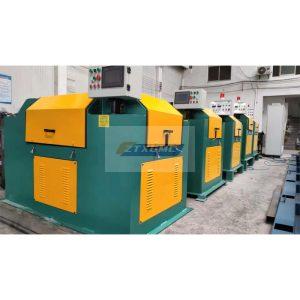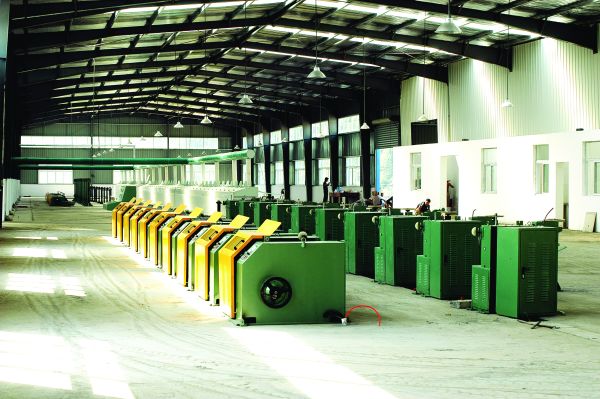Belt Sander And Grinder
Pros and Cons of Belt Sander vs. Belt Grinder
When it comes to sanding and grinding tasks, having the right tool for the job can make all the difference in achieving a professional finish. Two common tools used for these tasks are belt sanders and belt grinders. While they may look similar at first glance, there are key differences between the two that can impact their performance and versatility.
Belt sanders are typically used for sanding wood, metal, or other materials to smooth surfaces and remove imperfections. They are equipped with a continuous loop of sandpaper that rotates around two drums, providing a consistent and even sanding action. Belt sanders are commonly used in woodworking and carpentry for tasks such as shaping, smoothing, and finishing surfaces.
On the other hand, belt grinders are designed for more heavy-duty grinding tasks, such as sharpening tools, shaping metal, or removing excess material. They are equipped with a more aggressive abrasive belt that can handle tougher materials and provide faster material removal. Belt grinders are commonly used in metalworking, knife making, and fabrication for tasks that require precision and control.
One of the main differences between belt sanders and belt grinders is the speed at which they operate. Belt sanders typically run at slower speeds, making them ideal for fine sanding and finishing tasks where precision is key. Belt grinders, on the other hand, operate at higher speeds, allowing them to quickly remove material and shape surfaces with ease.
Another key difference between belt sanders and belt grinders is the type of abrasive belt they use. Belt sanders typically use finer grit sandpaper for smoother finishes, while belt grinders use coarser grit belts for more aggressive material removal. This difference in abrasive belts can impact the overall performance and versatility of each tool.
In terms of versatility, belt sanders are more commonly used for a wider range of tasks due to their ability to provide a smooth and consistent finish on various materials. They are often used in woodworking, furniture making, and home improvement projects where a fine finish is desired. Belt grinders, on the other hand, are more specialized tools that are typically used for specific grinding tasks in metalworking and fabrication.
When it comes to the pros and cons of belt sanders vs. belt grinders, there are several factors to consider. Belt sanders are known for their ease of use, versatility, and ability to provide a smooth finish on a variety of materials. However, they may not be as effective for heavy-duty grinding tasks or shaping metal surfaces.

On the other hand, belt grinders are known for their speed, power, and precision when it comes to grinding and shaping metal. They are ideal for tasks that require aggressive material removal and shaping capabilities. However, belt grinders may not be as suitable for fine sanding tasks or finishing surfaces to a smooth finish.
In conclusion, the choice between a belt sander and a belt grinder ultimately depends on the specific tasks at hand and the desired outcome. While both tools have their own strengths and weaknesses, understanding the differences between them can help you choose the right tool for your next sanding or grinding project. Whether you need a tool for fine sanding or heavy-duty grinding, there is a belt sander or belt grinder that can meet your needs and help you achieve professional results.
Applications and Uses of Belt Sander and Belt Grinder
Belt sanders and belt grinders are two powerful tools that are commonly used in woodworking, metalworking, and other industries. While they may look similar at first glance, there are some key differences between the two that make them suitable for different applications.
One of the main differences between a belt sander and a belt grinder is the type of work they are designed for. Belt sanders are typically used for finishing and smoothing surfaces, such as wood, metal, or plastic. They are great for removing imperfections, shaping edges, and preparing surfaces for painting or staining. Belt sanders are also commonly used for removing old finishes or paint from surfaces.
On the other hand, belt grinders are more heavy-duty tools that are designed for aggressive material removal. They are commonly used in metalworking applications, such as shaping and sharpening metal parts, removing welds, and grinding down rough surfaces. Belt grinders are also used for sharpening tools, such as knives and chisels, and for shaping and polishing metal pieces.
Another key difference between belt sanders and belt grinders is the speed at which they operate. Belt sanders typically operate at slower speeds, making them ideal for precision work and finishing tasks. Belt grinders, on the other hand, operate at higher speeds, allowing them to quickly remove material and shape surfaces.
In terms of the belts themselves, belt sanders and belt grinders use different types of belts that are suited for their specific applications. Belt sanders typically use finer grit belts, such as 80 to 120 grit, which are designed for smoothing and finishing surfaces. Belt grinders, on the other hand, use coarser grit belts, such as 36 to 60 grit, which are designed for aggressive material removal.
When it comes to the size and power of the machines, belt grinders are generally larger and more powerful than belt sanders. Belt grinders are often equipped with larger motors and wider belts, allowing them to handle heavier workloads and more demanding tasks. Belt sanders, on the other hand, are typically smaller and more compact, making them easier to maneuver and use in tight spaces.

Despite their differences, both belt sanders and belt grinders are versatile tools that can be used for a wide range of applications. Whether you are a professional woodworker, metalworker, or DIY enthusiast, having a belt sander or belt grinder in your workshop can help you achieve professional results and save time and effort on your projects.
In conclusion, while belt sanders and belt grinders may look similar, they are designed for different applications and have distinct features that make them suitable for specific tasks. Understanding the differences between the two tools can help you choose the right tool for your needs and achieve the best results in your projects. Whether you are looking to smooth and finish surfaces or remove material and shape metal parts, having a belt sander or belt grinder in your workshop can help you get the job done efficiently and effectively.
Key Differences in Features and Functionality of Belt Sander and Belt Grinder
When it comes to woodworking and metalworking, having the right tools can make all the difference in the quality of your finished product. Two common tools used in these industries are belt sanders and belt grinders. While they may look similar at first glance, there are key differences in their features and functionality that make them suited for different tasks.
One of the main differences between a belt sander and a belt grinder is the type of work they are designed for. Belt sanders are typically used for finishing tasks, such as smoothing out rough surfaces or removing old paint or varnish. They are great for preparing surfaces for painting or staining, as they can quickly and efficiently remove imperfections and create a smooth, even finish.
On the other hand, belt grinders are more heavy-duty tools that are designed for shaping and sharpening metal. They are commonly used in metalworking shops for tasks such as grinding, deburring, and polishing metal parts. Belt grinders are often equipped with more powerful motors and larger belts than belt sanders, allowing them to remove material quickly and efficiently.
Another key difference between belt sanders and belt grinders is the type of belt they use. Belt sanders typically use finer grit belts, which are designed for finishing tasks and creating a smooth surface. These belts are usually made of sandpaper or other abrasive materials and are ideal for removing small imperfections or smoothing out rough surfaces.
In contrast, belt grinders use coarser grit belts that are designed for shaping and sharpening metal. These belts are often made of abrasive materials such as aluminum oxide or silicon carbide and are capable of removing larger amounts of material quickly. This makes belt grinders ideal for tasks that require more aggressive material removal, such as shaping metal parts or sharpening tools.
The size and design of the belt on a belt sander or belt grinder can also vary depending on the tool’s intended use. Belt sanders typically have narrower belts that are designed for precision work on smaller surfaces. These belts are often between 3 and 4 inches wide and are ideal for tasks such as sanding furniture or cabinets.
In contrast, belt grinders often have wider belts that are designed for heavy-duty work on larger surfaces. These belts can range from 6 to 12 inches wide and are ideal for tasks such as grinding metal parts or shaping metal bars. The wider belt on a belt grinder allows for more material removal in a shorter amount of time, making it a more efficient tool for heavy-duty tasks.
Overall, while belt sanders and belt grinders may look similar at first glance, there are key differences in their features and functionality that make them suited for different tasks. Whether you are working on woodworking projects or metalworking tasks, choosing the right tool for the job can help you achieve professional results. By understanding the differences between belt sanders and belt grinders, you can select the tool that best meets your needs and helps you achieve your desired outcome.






